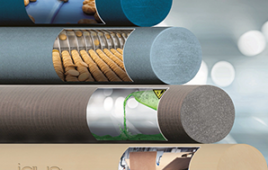Researchers from HRL Laboratories, LLC in California recently announced the development of a new process to 3D print stronger, more heat-resistant ceramics capable of withstanding temperatures of 2,500 degrees Fahrenheit.
Traditionally, 3D-printed ceramics involve complex techniques needed to deposit layers of material atop each other, thus requiring the use of materials with low melting points.
According to research first published in Science, a team of researchers invented what they’re calling a “pre-ceramic” resin. Once a basic shape is printed, it can then be heat-treated to transform the pre-ceramic resin into a regular ceramic piece.
“With our new 3D printing process we can take full advantage of the many desirable properties of this silicon oxycarbide ceramic, including high hardness, strength and temperature capability as well as resistance to abrasion and corrosion,” said program manager Dr. Tobias Schaedler in a statement.
According to HRL Laboratories, this innovative process could be particularly handy in manufacturing large components in jet engines and hypersonic vehicles, among other uses.
Can you think of other applications for this latest breakthrough in additive manufacturing technology? Comment below or tweet me @MNetAbbey.
Filed Under: Materials • advanced




